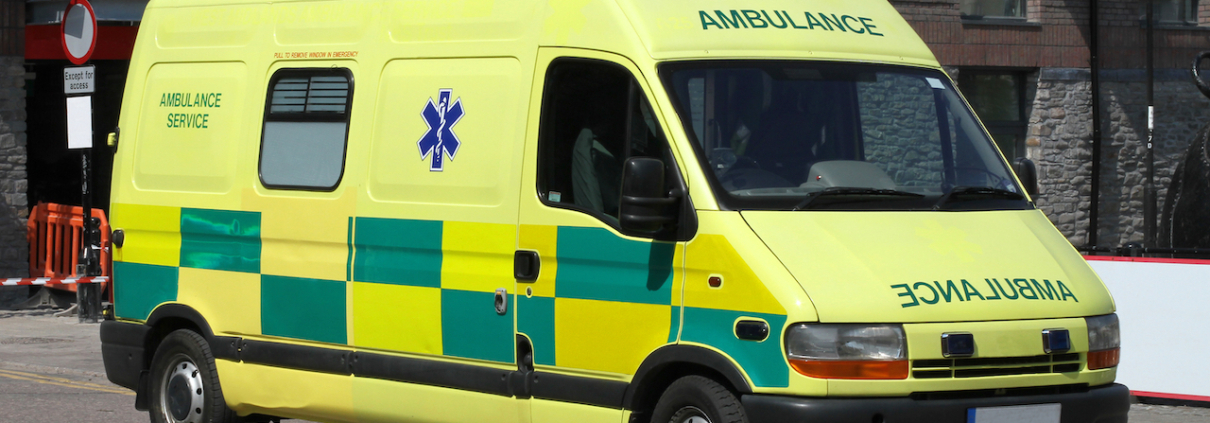Why Are Ambulance Waiting Times Getting Longer?
UK ambulance waiting times are bad, and they show every sign of getting worse.
Some cases have been so severe that they’ve made the news. For example, an 85 year old in Cornwall had to wait a total of 40 hours to get to A&E. This included 14 hours for the ambulance to reach her, and a further 26 hours before she was taken into the hospital. And even then, she did not receive treatment for hours.
This is an extreme case. But still, UK ambulance waiting times are long and getting longer.
What’s the Average UK Ambulance Waiting Time for Critical Calls?
The NHS sets a target response time of 7 minutes for critical calls. Through 2021/22, critical patients waited an average of 8 and a half minutes for a response. This might not sound like much, but it’s almost a fifth longer than patients had to wait in 2018/2019. Also, for critical patients, every second counts. An extra minute’s wait could mean life or death.
What’s the Average UK Ambulance Waiting Time for Non-Critical Calls?
For less urgent cases, waits have doubled over the past few years to an average of 3 hours.
And unfortunately, the situation does not look likely to improve anytime soon. Ambulance workers voted for strike action in early December 2022. Industrial action on the 15 and 20 December affected a quarter of frontline services in England, and nearly all services in Wales and Northern Ireland.
Scotland remained unaffected, as unions suspended industrial action to consider a new pay offer.
While there are rules in place requiring ambulance services to provide emergency care, these strikes served to make a bad situation even worse.
Why Are Ambulance Waiting Times Getting Longer?
The main reason ambulance waiting times are getting longer is due to the immense backlog the NHS is facing following two years of government lockdowns.
Because of this backlog, ambulance services are facing an increased demand. And though the paramedic workforce has increased, absences related to poor mental health have increased from 5% in March 2019 to 9% in March 2022.
Plus, despite the increased workforce, ambulance crews have less capacity, as ambulances now have to wait longer with patients outside hospitals. According to one Health Foundation report, more than 10% of ambulances had to wait for over an hour outside hospitals in July 2022.
And because the whole service is stretched, even the smallest increase in handover times can result in a larger increase in the average response times.
How is the NHS Responding to this Problem?
The Health Foundation has issued a series of recommendations for addressing the issue:
- Focus on handover delays. Increase hospitals’ capacity and flow-through with more beds and staff. Sunak’s pledge to invest in social care along with other out-of-hospital services could make a difference here.
- Further increase the number of paramedics and address the causes of poor mental health in the workforce to reduce sickness absence.
- Work to reduce the demand. This might be achieved through greater investment in community services, with an emphasis on addressing health conditions as early as possible before they require an ambulance response.
Prime Minister Rishi Sunak has claimed he plans to “sit down with the NHS” to discuss ambulance waiting times. He’s also announced that the government has put more money into the NHS, and more money into social care. The idea is that funding social care will allow more people to move out of hospitals and back into their own homes.
How Long Before Ambulance Waiting Times Improve?
Unfortunately, it’s likely that UK patients will face lengthy ambulance waiting times for the foreseeable future.
The NHS backlog is not going to get any better anytime soon. So there will be a high demand for services for some time yet.
Also, no matter what plans the government and NHS put into place to address the issue, changes won’t come overnight. And the strike action in December 2022 may serve to delay the implementation of certain improvements.
Get Help to Improve Efficiency and Care Standards in Healthcare
At Cairn Technology, we’ve been working with healthcare providers including NHS hospitals and care homes for over 20 years. We work with you to find solutions to help improve efficiency and standards through effective infection control, air quality monitoring and improvements.
Find out how we can help improve efficiency and care standards in your healthcare setting.



